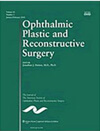Orbital Blow-Out Fracture Surgery and Enophthalmos (Sunken Eyes)
Eye and eye socket injuries occur fairly commonly. Injuries include eyelid laceration, canalicular laceration (tear drain injuries), orbital hemorrhage (bleeding), and orbital fractures (eye socket bone fractures, “blow-out fracture” with enophthalmos or true sunken eye). They can result from blunt eye trauma or sharp injuries, including many sport-related activities, falls, assaults, etc. The eyeball itself is also prone to injury and it too needs to be thoroughly examined and treated by an oculoplastic surgeon to protect it.
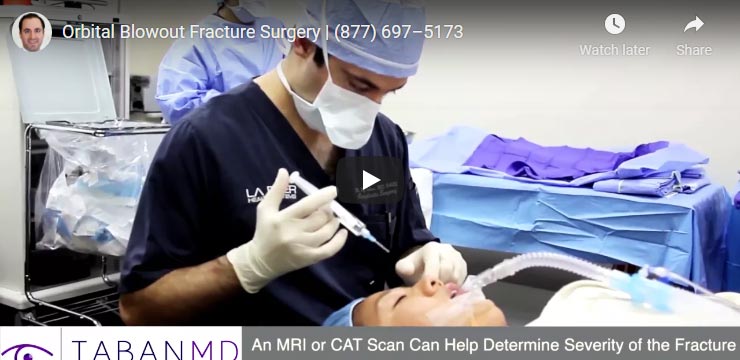
Listen to Dr. Taban on ESPN LA radio on Orbital Fractures
Orbital Blow-Out Fracture Surgery
An “orbital blow out fracture” results from trauma to the orbit and eye area with resultant force causing fracture of the orbit into the adjacent sinuses as the orbital bones are fragile and thin. The most common location of the fracture is the orbital floor followed by the medial wall. Not all orbital (blow out) fractures need to be surgically fixed. Criteria for orbital “blow out” fracture surgery include large fractures, diplopia (double vision), and enophthalmos (sunken eyes).
Orbital “blow out” fracture repair should be performed within the first 2 weeks of the trauma. Waiting longer can result in scarring and increased difficulty in the repair with lowered success rate. However, at times the surgeon is forced to address the problem later on for various reasons. For instance, sunken eyes from the orbital fracture can manifest or worsen later on. In those cases, surgery is performed later to improve sunken eyes (enophthalmos surgery).
Dr. Taban uses the latest minimally invasive technique to repair orbital fractures and has even penned an article about Orbital Wall Fracture Repair Using Seprafilm.
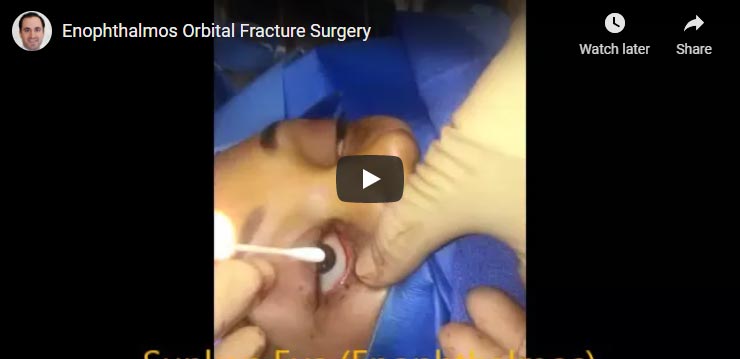
Video showing orbital metal implant is being removed as it was causing eye motility problem (double vision) and eye pain. It was originally placed by another surgeon to treat orbital fracture. Dr. Taban is against using metal in the orbits.
During your consultation with Dr. Taban in Beverly Hills/Los Angeles or Santa Barbara, he will evaluate your eyes and face and review orbital CT scan to assess the severity of the orbital fracture and need for orbital fracture surgery repair. Dr. Taban performs orbital fracture surgery using hidden incision inside the eyelids, with quick recovery. Orbital blow out fracture surgery is performed under general anesthesia, which usually takes about an hour to complete. As an outpatient procedure, the patient goes home after surgery and follows up in clinic a week later.
Read Article Published by Los Angeles’ Dr. Taban about Orbital Wall Fracture Repair Using Seprafilm


Orbital Implant to Treat Sunken Eye from Silent Sinus Syndrome
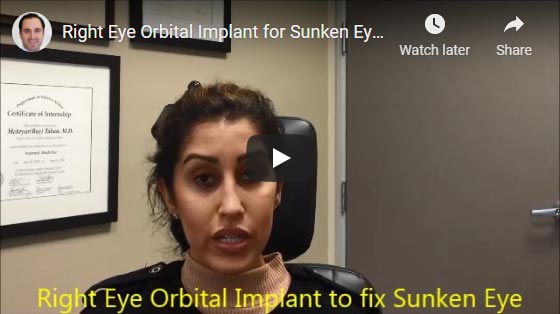
Young woman with right sunken eye (enophthalmos) due to silent sinus syndrome underwent reconstructive surgery including sinus surgery and right orbital implant placement.
Who Should Treat Orbital and Eyelid Trauma?
The orbit is a small, compact and complex structure. The eyelid is also a mobile, complicated structure, made up of many different layers. Oculoplastic surgeons have undertaken the extra training to deal with the nuances of treating orbital and eyelid diseases and injuries. An oculoplastic surgeon, who is a member of American Society of Ophthalmic Plastic and Reconstructive Surgery (ASOPRS), is someone who is a board-certified ophthalmologist who has completed additional 2-year fellowship training in cosmetic and reconstructive plastic surgery of the eyelids, orbits (eye socket), lacrimal system( tearing system) and surrounding structures. Dr. Taban is double board-certified by American Society of Ophthalmic Plastic and Reconstructive Surgery (ASOPRS), American Academy of Ophthalmology (AAO), and a diplomat of the American Board of Cosmetic Surgery (ABCS).
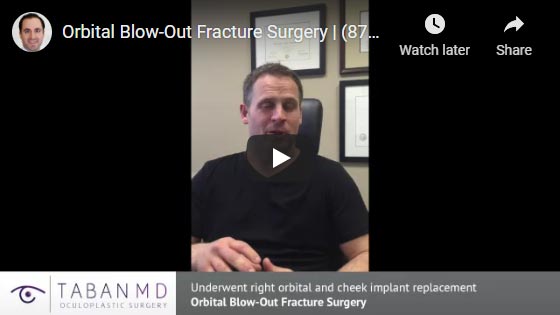
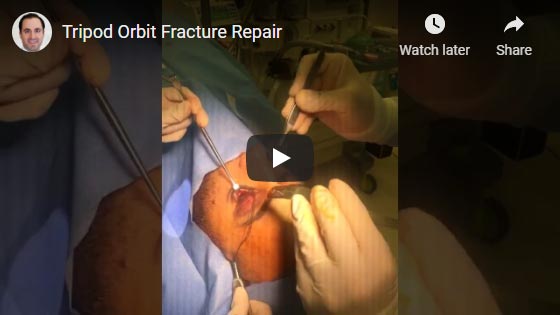
Before & After Photos
Extremely knowledgeable and incredibly skilled! Dr. Taban quickly diagnosed me with a sunken eye (enophthalmos) from Silent Sinus Syndrome and worked closely with me throughout my surgery and aftercare. I would not trust my eyes with anyone else! He conducted an orbital reconstruction with orbital implant, and this was combined with sinus surgery. … so thankful for the amazing results!
I had sunken right eye (called enophthalmos) from right orbital fracture resultant from sinus surgery. My eye was sunken and fallen below the other eye into the maxillary sinus. I was referred to Dr. Taban by another physician as he is known for complex orbital surgery … The surgery was performed successfully using hidden inside … healed very quickly. Immediately I noticed improvement of eyeball position back to normal. It has been over 2 years from the surgery and my surgery result has lasted. I truly thank Dr. Taban for his amazing work as he has changed my life…

